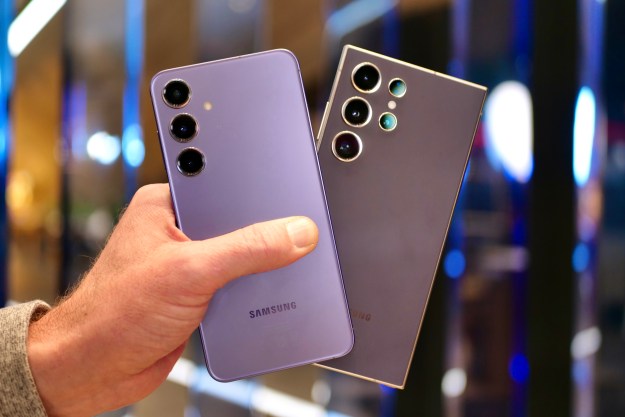

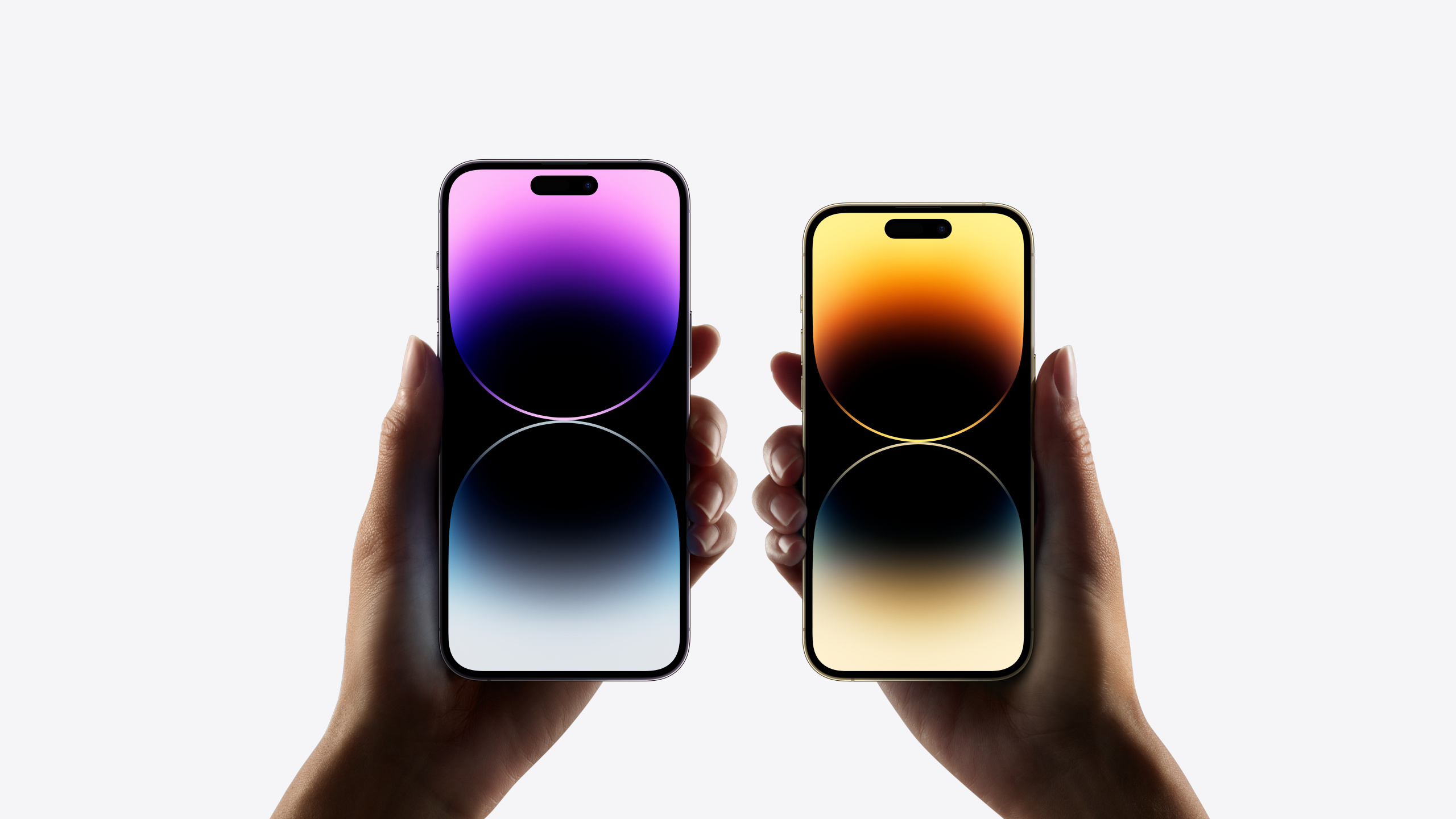
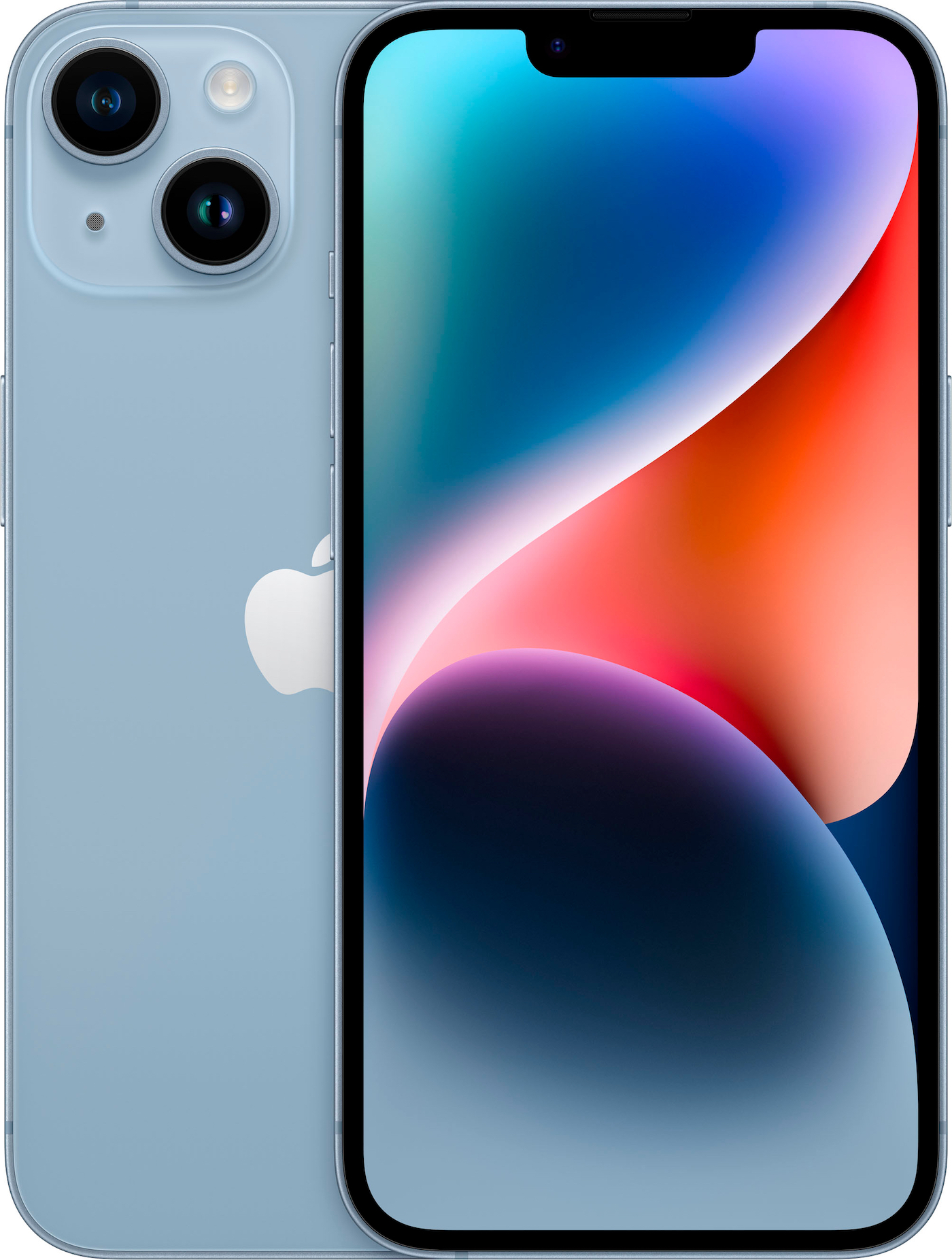


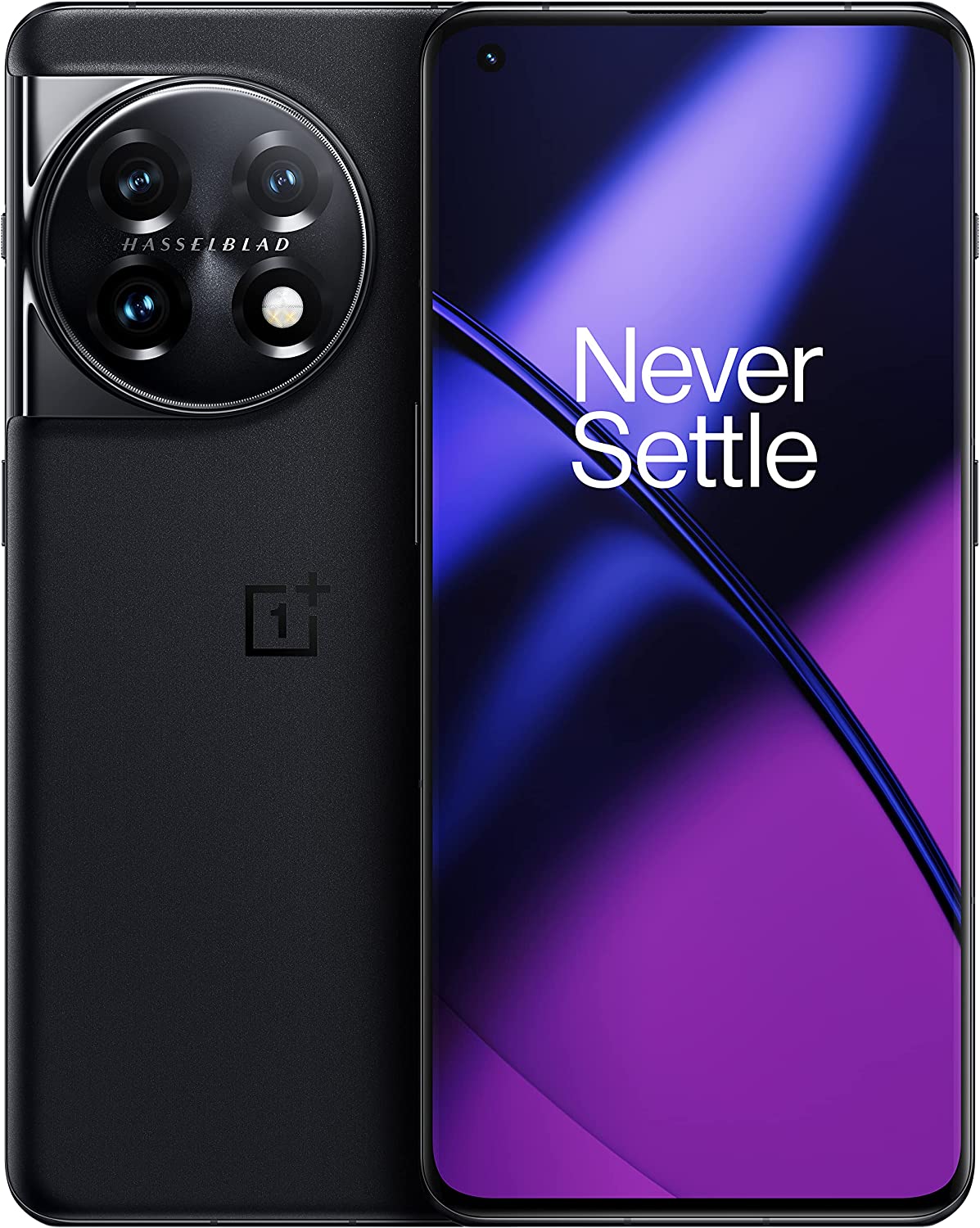
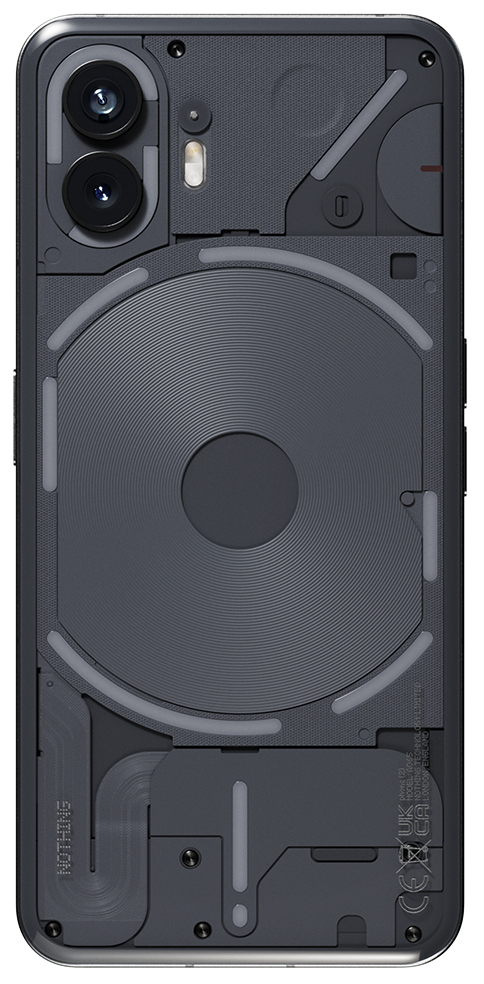

When it comes to camera phones, the Samsung Galaxy S23 Ultra is the new champ. Although the competition was stiff, Samsung's latest offering emerged victorious in our head-to-head comparison with the Google Pixel 7 Pro, thanks to its exceptional software and edge in crucial categories. The Samsung Galaxy S23 Ultra produces stunningly vibrant and shareable images, solidifying its status as one of the top camera phones available. Of course, if you're not partial to Samsung, there are other options to consider, such as the best Apple phone, the most cost-effective phone, and the best budget phone on the market.
At Digital Trends, we are passionate about photography and take thousands of photos every month. We enjoy comparing the performance of different phone cameras by pushing them to their limits and conducting direct camera shootout comparisons. We do this because we understand that camera quality is an important factor for most buyers. Have different priorities? We offer guides for the best overall smartphones, the best cheap smartphones, and the best old phones so you can find the right one for you.
But if camera quality is your top priority, you're already in the right place. Here are all of our picks for the best camera phones you can buy in 2023.
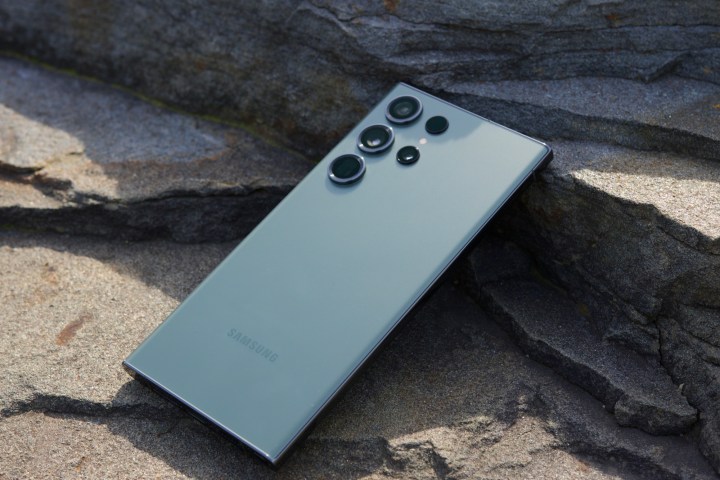
Samsung Galaxy S23 Ultra
Best camera phone
- Incredibly powerful processor
- Versatile telephoto zoom camera
- S Pen adds value
- Water-resistant and durable
- Long software update commitment
- Many interesting features to explore
- Large, bright, detailed screen
- Wired charging is complicated, and only 45W
- Big and heavy
Why should you buy this?: This powerful smartphone will last you for years.
Who’s it for?: If you seek a phone that produces shareable photos quickly, the Galaxy S23 Ultra is excellent.
Why we picked the Samsung Galaxy S23 Ultra:
Samsung's latest flagship smartphone boasts a standout feature: its ISOCELL camera with a whopping 200 megapixels. It also has a 12MP wide-angle camera with a 120-degree field of view and two 10MP telephoto cameras offering 3x and 10x optical zoom. The camera also includes optical image stabilization (OIS), laser autofocus, and Super Resolution Zoom, which provides suggested levels of 30x and 100x digital zoom.
The Samsung Galaxy S23 Ultra lets you take photos at its maximum 200MP resolution. However, remember that they require at least 40MB of storage space, significantly more than the typical 4 to 7MB storage space needed for the camera's default 12MP shots. But if you want ultra-detailed images, the option is there.
One important thing to note about the Galaxy S23 Ultra's camera is that its zoom capabilities are its most impressive feature, not the 200MP camera. The 3x and 10x zoom are excellent quality, and the 30x zoom is catching up. While the 100x zoom still has room for improvement, it's better than previous models. The telephoto cameras on the Galaxy S23 Ultra can capture images that are impossible to replicate with other smartphones while maintaining high quality. If you buy the Galaxy S23 Ultra, you can enjoy taking amazing zoom photos.
The primary camera captures terrific pictures, although it may not be evident that it has a 200MP capacity. The shots are lively and energetic, displaying rich hues and intricate details. We appreciate the camera's overall vibe, which strikes a balance between genuine and exaggerated visuals. Generally, the colors are enhanced just enough to make them pop, but occasionally, they can become oversaturated, particularly with reds and blues in certain scenarios.
Still, even with a tendency for oversaturated colors, it's hard to find a camera system more complete than the one on the Galaxy S23 Ultra. If high-quality photography is your number one concern, this is the smartphone to buy.

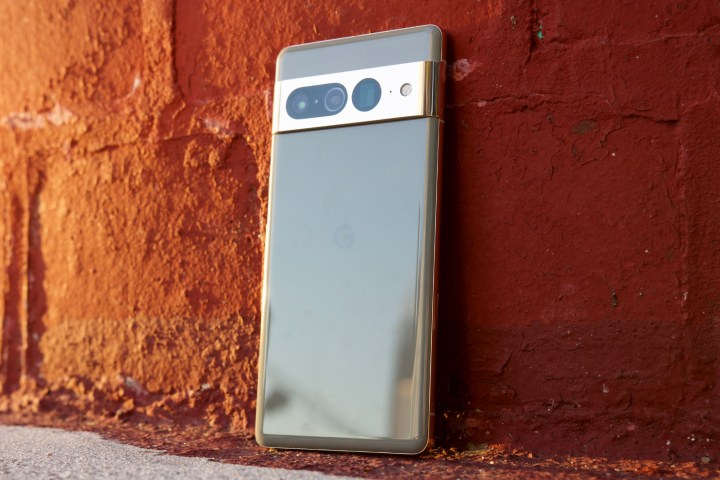
Google Pixel 7 Pro
Best camera phone runner-up
- Bold, striking design
- Gorgeous 120Hz screen
- Face unlock works well
- Fast and powerful performance
- Top-tier camera system
- Pixel features are unmatched
- Poor fingerprint sensor
- Tensor G2 runs hot
- Mediocre battery life
- Endless software bugs
Why should you buy this?: The Pixel 7 Pro might have some software issues, but it's an incredible camera phone regardless.
Who’s it for?: Anyone who wants a camera that produces consistently great point-and-shoot shots without the need for editing.
Why we picked the Google Pixel 7 Pro:
Google's Pixel line has varied in overall quality over the years, but it's consistently been one of the best camera phones you can buy. This year, the Google Pixel 7 Pro has proven, without a shadow of a doubt, that it is one of the best camera phones you can buy.
The rear camera suite comprises a 50-megapixel main lens, a 12MP ultrawide lens, and a 48MP telephoto lens with a 5x optical zoom. It's a powerful setup, but the real magic actually comes from Google's software. The images it creates are simply incredible and rarely (if ever) require further processing in an editing suite. Just tap the button, and you'll get a great image that's ripe for sharing.
That's not to say there's no reason to dive into the editing software, though, as Google has provided plenty of tools to really fine-tune your images. It has no issue with balancing your contrast and saturation, Magic Eraser makes a return from the Pixel 6 Pro, and Google has also added Magic Unblur, which aims to unblur any blurry photos. Unlike the excellent Magic Eraser, Magic Unblur is a bit hit-and-miss, but it's still fun to test it out.
The optical zoom at 5x is also excellent, and you can even push the camera to 30x with Google's Super Res Zoom feature — and the images at 30x are actually good. They look a bit like a watercolor, but they're still impressive, given the long range. The ultrawide lens also has a new trick this year — a macro mode. It kicks in automatically when you're close to a subject, and it also does a remarkably good job, whether you're taking pictures of individual grains of sand or a close-up of a flower bud. There's a little distortion around the edges, but that's common in wide-angle lenses, so it's forgivable.
Perhaps the only downside is the 10.8MP selfie camera, which is a little uninspiring, even if it's broadly fine. A fixed focus means you can get some soft areas in places you might not with the iPhone 14 Pro, and there's no natural bokeh too. But that aside, the Pixel 7 Pro's camera is incredible and one of the best you can get in a smartphone. It starts from $899.

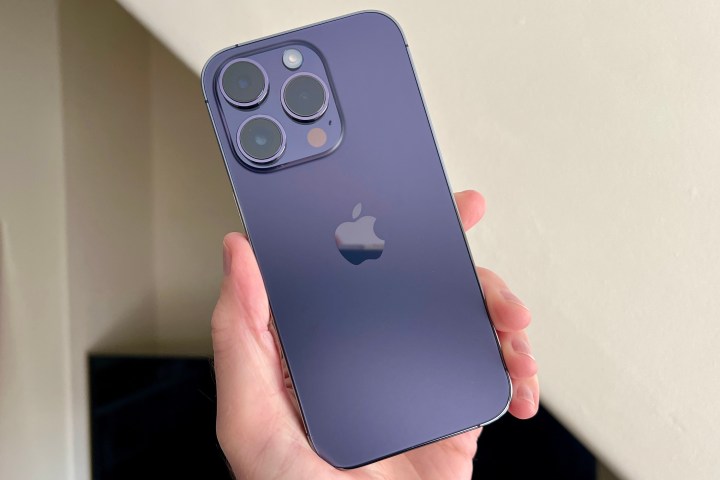
Apple iPhone 14 Pro
Best Apple camera phone
- Camera improvements mean great photos
- Always-on display looks fantastic
- Powerful A16 Bionic processor
- Vibrant screen and clear speakers
- Long-term software support
- One-day battery life
- Modest charging speed
Why should you buy this?: The Apple iPhone 14 Pro is an amazing smartphone all around, and that includes an excellent camera.
Who’s it for?: People who want an iPhone with a great camera.
Why we picked the iPhone 14 Pro:
No one could ever accuse Apple of over-doing it on camera specs, but iPhone cameras always still seem to come out as one of the strongest contenders of any particular smartphone generation. In the case of the iPhone 14 Pro, it's only a small improvement over the iPhone 13 Pro, but an improvement is an improvement, and this is the iPhone to buy if you want an Apple phone with an amazing camera.
It has a triple-lens setup in the rear camera suite, including a 48MP main lens, a 12MP telephoto, and a 12MP ultrawide-angle lens. The main lens is an upgrade over the previous generation, but otherwise, the hardware is basically the same. The telephoto lens has a 3x optical zoom, so clearly, Apple is waiting for at least one more generation before adding a periscope-style 5x zoom or greater.
But don't let that lower zoom put you off, as the iPhone 14 Pro produces exceptional images. It easily handles all sorts of lighting levels, taking vibrant and colorful stills in well-lit areas, and produces excellent results when the lights go down as well. Apple's editing software isn't quite as good as competitors (for instance, Samsung), but it still does a good job if you're happy to spend the time learning how to get the best results out of it.
If you want to really get the best out of your shots, then you can use Apple's ProRaw format to control every aspect of the resulting photograph. Keep in mind those ProRaw images are storage hogs, though, with single images taking around 60MB. ProRes, Apple's high-resolution video mode, is even worse, with one minute of footage sitting at an estimated 1.7GB in size. That's a lot of storage, , and a good reason to splurge for the 1TB model.
But even if you never dive into those modes (and many won't), you won't feel like you're missing out. Apple's iPhone 14 Pro is a triumph as a smartphone and an exceptional camera phone as well. Prices start from $999.

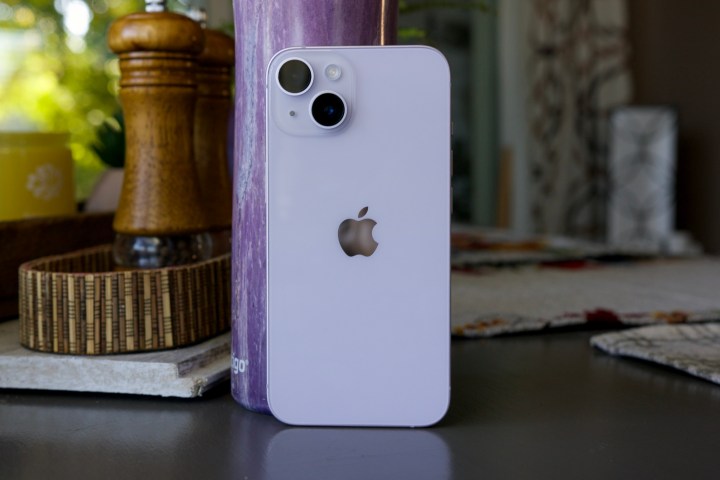
Apple iPhone 14
Best cheap Apple camera phone
- Comfortable, high-end build
- OLED screen looks fantastic
- A15 chip performs great
- Good camera upgrades
- Dependable battery life
- Helpful safety features
- 60Hz display
- No telephoto camera
- eSIM might be a pain for some
Why should you buy this?: It's still an excellent iPhone with a camera to match at a lower price.
Who’s it for?: Someone who wants a great iPhone camera but doesn't want to pay almost $1,000.
Why we picked the iPhone 14:
As is rapidly becoming usual, the iPhone 14's limelight was stolen by the iPhone 14 Pro — but don't let the iPhone 14 linger in the shadows, as it too is an excellent smartphone with a very capable set of cameras. It has a 12MP wide-angle main lens with a 12MP ultrawide lens setup in the rear camera module, plus a 12MP selfie camera too.
The main camera really is a star. It's largely the same lens we saw in the iPhone 13, but don't let that put you off. It captures crisp and vivid images, packed with all the color and detail you need. It takes great lowlight stills, and for really dark images, the Night Mode kicks in, though that mode does soften the details quite a bit.
The 12MP ultrawide lens is also great, and unlike some other smartphones, images captured with it have largely the same color balance as the main lens. It can be jarring to see colors change between lenses, and the iPhone 14 avoids this excellently.
The selfie lens is the area that actually has seen tangible upgrades over the iPhone 13, thanks to the inclusion of autofocus. This may seem like a small addition, but the impact is huge. Details across all selfies are sharper, and the autofocus really helps to pick out the small details, like lines on your face or even individual hairs. The large aperture also means there's a natural bokeh effect, even when you're not using Portrait mode. The iPhone 14 is a particularly great camera phone for selfies, and you're not missing out in this area by missing the Pro model.
While technically a downgrade from the iPhone 14 Pro, the iPhone 14 is a great phone on its own merits, with a great camera to boot. With prices starting at $799, it's also a strong way to save a couple of hundred dollars on your new iPhone.

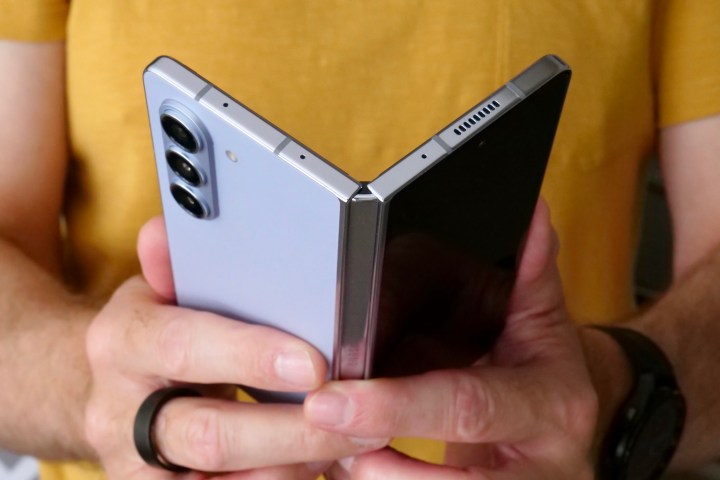
Samsung Galaxy Z Fold 5
Best versatile camera phone
- Thinner and lighter than ever
- Silent, high-quality hinge
- Strong multitasking tools
- Fun, social media-friendly camera
- Inner screen is perfect for games and video
- IPX8 and durable chassis
- Battery life hasn't dramatically improved
- Slow charging
Why should you buy this?: Because it's on the bleeding edge of innovation and has some fun new camera features.
Who’s it for?: Someone who doesn't mind paying a lot of money for a camera phone with some new tricks.
Why we picked the Samsung Galaxy Z Fold 5:
Compared to our top pick, the Galaxy S23 Ultra, the Galaxy Z Fold 5's camera capabilities differ. While it may not be as technically impressive as the S23 Ultra's camera, it still offers a solid experience. The Galaxy Z Fold 5 features a 50-megapixel main camera, a 12MP wide-angle camera, and a 10MP telephoto that allows for a 3x optical zoom — just like the 2022 Z Fold 4. Additionally, the Z Fold 5 has new lenses, an improved image signal processor as part of the Snapdragon 8 Gen 2 chip, and various software upgrades that enhance the overall image quality.
When the phone is folded, the camera controls are moved to the bottom portion of the screen, while the viewfinder is relocated to the top part. This is different from traditional phone designs, which usually have the camera controls and viewfinder in fixed locations on the screen. The viewfinder also has a Dual Preview feature that allows you to preview the photo, whether you’re the one taking it or in front of the camera.
This innovative design allows for a more versatile user experience, as it enables users to adjust the phone to their specific needs and preferences. For example, if a user is taking a picture of a landscape, they may prefer to have the viewfinder at the top of the screen to capture a wider shot. On the other hand, if they are taking a selfie, having the camera controls at the bottom of the screen may be more convenient. Not only that, but the Fold 5 can essentially be used as its own tripod. Get the camera app ready, half-open the phone, place it on a flat surface, and you have an ultra-steady and stable shot wherever you go.
If you understand that the Z Fold 5's camera isn't aiming for complete realism in every shot, you'll likely be pleased with its performance. While there are minor downsides, it offers some improvements over the Galaxy Z Fold 4's camera. The photos captured by the Z Fold 5 are vibrant in color, particularly in bright sunlight, where you'll recognize the familiar, overly-saturated tone found in other Samsung phones like the Galaxy A54.

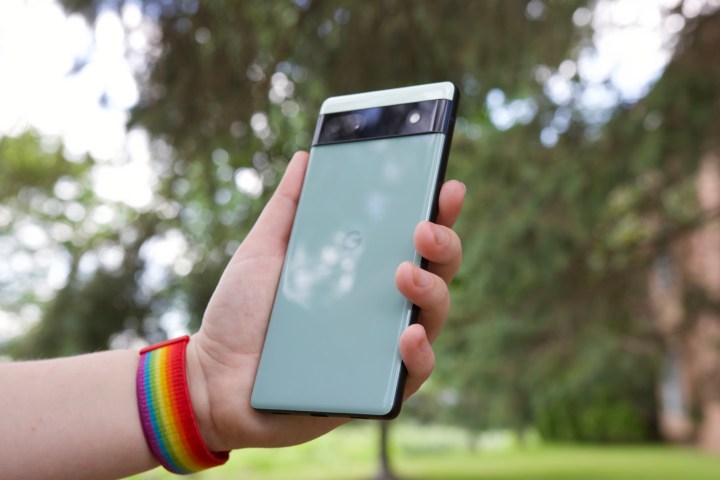
Google Pixel 6a
Best budget camera phone
- Compact, lightweight design
- IP67 water resistance
- Flagship-grade performance
- Excellent cameras
- Clean software
- Years of guaranteed updates
- Display is only 60Hz
- Tensor chip runs hot
- Lacking battery life
Why should you buy this?: It's a fantastic camera on a reasonably priced smartphone.
Who’s it for?: Someone who wants a great camera, but doesn't want to pay flagship prices.
Why we picked the Google Pixel 6a:
Not everyone wants or needs a big, powerful, and (above all else) expensive flagship smartphone — but those people don't have to live with a sub-standard camera as a result. The flagship Pixel 7 Pro's high standards have passed down the line to its midrange cousin, the Pixel 6a. A half the price of the Apple iPhone 14 Pro, you get a smartphone that's just as capable and packed with the same software tricks that make all the Pixel phones incredible shooters.
The paper specs don't seem that impressive — and that's because they aren't. The Pixel 6a has the same 12.2MP main lens used on Pixel phones from the original Pixel, all the way up to the Pixel 5, though it is joined by a 12MP ultrawide lens, and has optical image stabilization (OIS) and phase detection autofocus. But Google's experience with this humble lens really shows, and the Pixel 6a is an extremely reliable camera phone in pretty much any situation.
Like the Pixel 7 Pro, the Pixel 6a excels as a camera that can handle a range of situations and adapt to them to produce a photo that doesn't need further tweaking. Despite its relatively low-end hardware, the Pixel 6a captures strong details with vibrant colors. It also isn't particularly phased by strong contrasts or challenging lighting conditions. It does struggle a little bit with low light environments, and while Google's Night Sight mode is still excellent, photos in this mode on the Pixel 6a do tend to come with very soft details. Still, it can effectively see in the dark, and that's very impressive for a phone of this price.
The key here is Google managed, yet again, to make a camera app that's simply good for snap-and-go, and shots that rarely need touching up. Of course, like the Pixel 7 Pro, the Pixel 6a has a bunch of software tricks up its sleeve. Magic Eraser is supported here, and so are the now mainstays of Portrait mode, Photo Sphere, and Real Tone. It even has a flagship processor, so processing those images won't necessarily take longer than on its more advanced siblings. The Pixel 6a is an excellent camera phone, and a very solid choice if you're looking to save some money. And save money you will since it starts at just $450.
We understand there's also a Google PIxel 7a. We recommend the older phone right now because of the camera similarities and price difference.

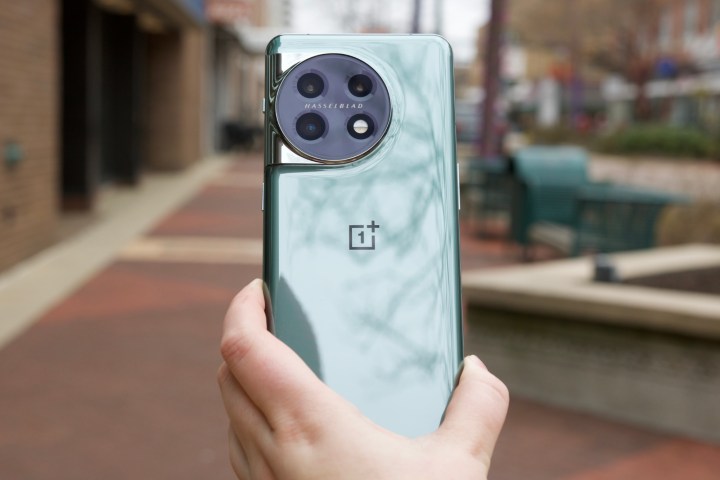
OnePlus 11
Best value camera phone
- Eye-catching design
- Two-day battery life
- 25 minute battery charging
- Characterful camera
- Long software update commitment
- No wireless charging
- Portrait camera disappoints
Why should you buy this?: You'll love what OnePlus offers for smartphones. It's a little bit different than what the big companies are doing.
Who’s it for?: Anyone looking for a unique experience.
Why we picked the OnePlus 11
The OnePlus 11 camera has been optimized through a partnership with Hasselblad. The 50-megapixel main camera, 48MP wide-angle lens, and 32MP Portrait Tele camera have all been enhanced for better performance. The main Sony IMX890 sensor boasts both optical and electronic image stabilization, while the wide-angle lens provides a 115-degree field of view. Additionally, a 13-channel Accu-spectrum Light Color Identifier sensor ensures precise color reproduction in photos.
Thanks to Hasselblad Natural Color Calibration technology and the phone's Accu-spectrum Light Color Sensor, the camera produces remarkably realistic colors in photos. Compared to the OnePlus 10 Pro, the OnePlus 11 camera provides more accurate white balance and better exposure for more effective shots.
However, the camera does have some limitations when it comes to close-up photography. While there is an automatic macro mode available, it tends to drain color from the photo and eliminates any depth of field created by the main sensor. Turning off the macro mode may result in unfocused images. Additionally, the telephoto camera leaves much to be desired. While the 2x zoom is decent, exceeding this to match the OnePlus 10 Pro's 3.3x zoom will produce lower-quality photos that may appear pixelated.


Nothing Phone 2
Best value camera phone runner-up
- Great, modern design
- Glyph lights are cool and useful
- Clean, yet customizable software
- Excellent daytime camera
- Colorful screen
- Only IP54 water resistance
- Poor lowlight camera performance
Why should you buy this?: There's no denying the unique glyph lights are cool and useful. The camera system is pretty good too.
Who’s it for?: Anyone tired of Google, Apple, and Samsung, and wants to try something new.
Why we picked the Nothing Phone 2:
There haven't been significant changes to the Nothing Phone 2's camera hardware compared to the Nothing Phone 1. It still has two cameras, one with a 50MP Sony sensor with optical and electronic stabilization and the other with a 50MP Samsung sensor with a wide angle of JN1 114 degrees and EIS. The selfie camera has been upgraded to 32MP. However, Nothing's focus has been on improving the software that powers these cameras, resulting in noticeable improvements in their performance.
The Nothing Phone 2 captures lively and colorful photos but is not excessively HDR or saturated like those taken with the Galaxy A54. While they may not have the same natural brilliance as the Pixel 7 camera, they are enjoyable and perfect for sharing on social media without any editing required. The main and wide-angle cameras produce consistent results, and even though there's no telephoto zoom, the 2x mode still delivers decent shots.

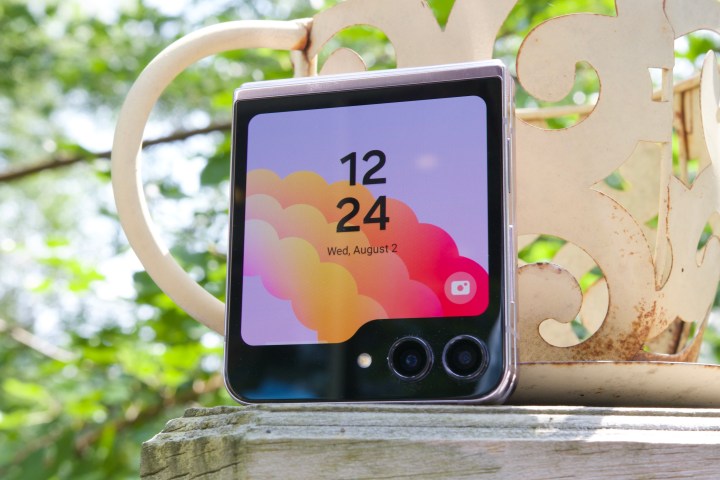
Galaxy Z Flip 5
Best fun camera phone
- No more gap when folded shut
- Extremely well-built
- Hinge feels outstanding
- Much more useful cover screen
- Fantastic performance
- Good and dependable cameras
- 5 years of updates
- The crease is still there
- Mediocre battery life
- Cover screen requires lots of tweaking
Why should you buy this?: If you're looking to live on the cutting edge of the next-gen flip phone market.
Who’s it for?: Anyone looking for the best flip phone on the market.
Why we picked the Samsung Galaxy Z Flip 5:
When it comes to the camera setup, users of the Galaxy Z Flip 4 will find that the Flip 5 is quite similar. The Flip 5 boasts a 12MP primary camera with an f/1.8 aperture and optical image stabilization and a 12MP ultra-wide camera with a 123-degree field of view. Furthermore, there's a 10MP selfie camera located on the main display. In essence, the camera system of the Flip 5 is almost the same as that of the Z Flip from the previous year.
However, there are some critical upgrades to the Z Flip 5 compared to its predecessor. The Snapdragon 8 Gen 2's improved image signal processor should produce better color reproduction. The main and ultrawide cameras now have a "clear lens coating" to prevent lens flares, and the selfie camera has a slightly improved aperture of f/2.2, as opposed to f/2.4 on the Z Flip 4. These improvements could significantly affect the quality of the photos and videos captured by the device.
Thanks to its folding design, the Z Flip 5 has a unique camera feature that allows you to use the main camera as a selfie camera, even when the phone is closed. It is made possible by the cover screen, which provides easy access to snap, review, and edit your photos through the Flex Window. Similar to the Fold 5, you can also prop the Flip 5 half-open and use it as a makeshift tripod, should the need arise.
Overall, the Galaxy Z Flip 5 is an impressive device that builds on the strengths of what came first while making key improvements in certain areas.

Frequently Asked Questions
There are a lot of technical specifications related to the cameras in our smartphones, so here’s a quick crash course to explain the basics.
Megapixels
The megapixel rating relates to detail. In simple terms: The higher the megapixel count, the more detail you’ll see in the picture. For a long time, the smartphone camera specs race focused on megapixel count, but there’s more to capturing a great photo than detail. It’s also worth noting that many cameras do not capture at the maximum megapixel settings by default, because it’s often more detail than you need. Most manufacturers are now working to improve other aspects of their cameras.
Sensor size
Sensor size is another thing to consider, as it turns out that all megapixels are not created equal. HTC coined the term “ultrapixel” to draw attention to the fact that it had bigger megapixels than some competing camera phones, so even with a 4-megapixel camera, it could potentially get better results than an 8-megapixel camera with smaller pixels. They’re measured in micrometers and bigger is theoretically better at capturing light. For example, the iPhone 14 Pro Max’s main lens has a 2.44 µm pixel size.
Optical image stabilization (OIS)
Optical image stabilization (OIS) helps to keep the camera steady, so if your hands are shaking, it will be less noticeable on a camera phone that has OIS support. It’s compensating for the movement in your hands.
High dynamic range (HDR)
High dynamic range (HDR) is a technique whereby the camera takes multiple shots of the same subject in different exposures and then combines them in post-processing to create one single shot, which is usually brighter and more detailed than a non-HDR shot. It requires some processing power, so you’ll find it might be a bit slow on budget devices like the Galaxy A53 5G, but it’s always desirable if you want the best possible photos.
Video recording
For video recording, you want to look at two things: Resolution and the frames per second (fps).
Resolution
The resolution is simply how much detail is captured. For 4K video, it’s 3840 x 2160 pixels. For Full HD it’s 1920 x 1080 pixels. Bigger is often better, but keep in mind you need a 4K TV or monitor to see the benefit, and 4K and 8K videos take up a lot of space on your phone’s hard drive, so it’s good to not keep it on 4K by default.
Frames per second (fps)
When you see a high frame rate, such as the iPhone’s ability to shoot Full HD at 120 fps, that means you can create slow-motion movies. You can slow the footage down to show detailed moments that would be a blur at a lower frame rate.
The fact that we all have smartphones in our pockets all day, every day, has led to an explosion in photography. We snap and share more photos than ever before and the smartphone has played a major role in the reinvention of digital photography.
It used to be that you’d expect two lenses on your phone — one at the front and one at the back. However, now it’s not uncommon to come across phones with multiple lenses on either side.
The truth is that the best smartphone cameras still fall way short of the best DSLR cameras when it comes to most shots. However, that gap is shrinking, but DSLRs still have an edge.
However, a high megapixel count isn’t the only determiner of a good camera, and that’s shown to great effect by several of our picks. If you had a 48-megapixel camera with pixel binning, for example, your output would be a 12-megapixel photo, but it would be far better than anything a regular 12-megapixel camera could produce.
It is technically possible, but it’s not very likely. While people occasionally find ways to exploit vulnerabilities in phone software, it’s usually necessary to trick you into downloading malware or to physically get a hold of your phone and install malware on it to access your phone’s camera. The best way to reduce the threat is to stick to the official app stores for app downloads and secure your phone with other measures, such as your fingerprint or a PIN. If your phone is acting strangely and you see activity in the call log or camera gallery that wasn’t you, then you may have a malware problem.
Here at Digital Trends, we’re always holding a game controller, camera, smartphone, or some other tech device for the majority of our workday. Not having something in our hands is an infrequent occurrence. When we experiment with smartphones, it usually takes us about a week to complete.
We view this amount of time as an appropriate duration that’s long enough to allow for proper testing. We examine each phone’s endurance and performance in typical conditions.
It’s not a secret that we are constantly using our smartphones. They are always a hand’s reach away. We love using the camera, whether for recreational use, artistic hobbies, or professional business purposes. A surefire way to assess these cameras is to travel to as many locations as possible and take as many pictures, and record as many videos as you can.
You won’t get an accurate idea of how quality varies between different models unless you test them out and compare them with each other. It’s hard to determine our favorite camera, so sometimes we simply leave it up for discussion. Many times these discussions lead to intense photo shooting competitions and more observation.
Editors' Recommendations
- Foldable phone deals: Samsung, Motorola, Google, and more, from $500
- Best Samsung Galaxy S23 Ultra deals: How to get the phone for free
- The best iPhone 14 cases in 2024: our 19 favorite ones
- The best iPhone 14 Pro Max cases in 2024: top 17 you can buy
- The best iPhone 14 Pro cases: 20 best ones in 2024


